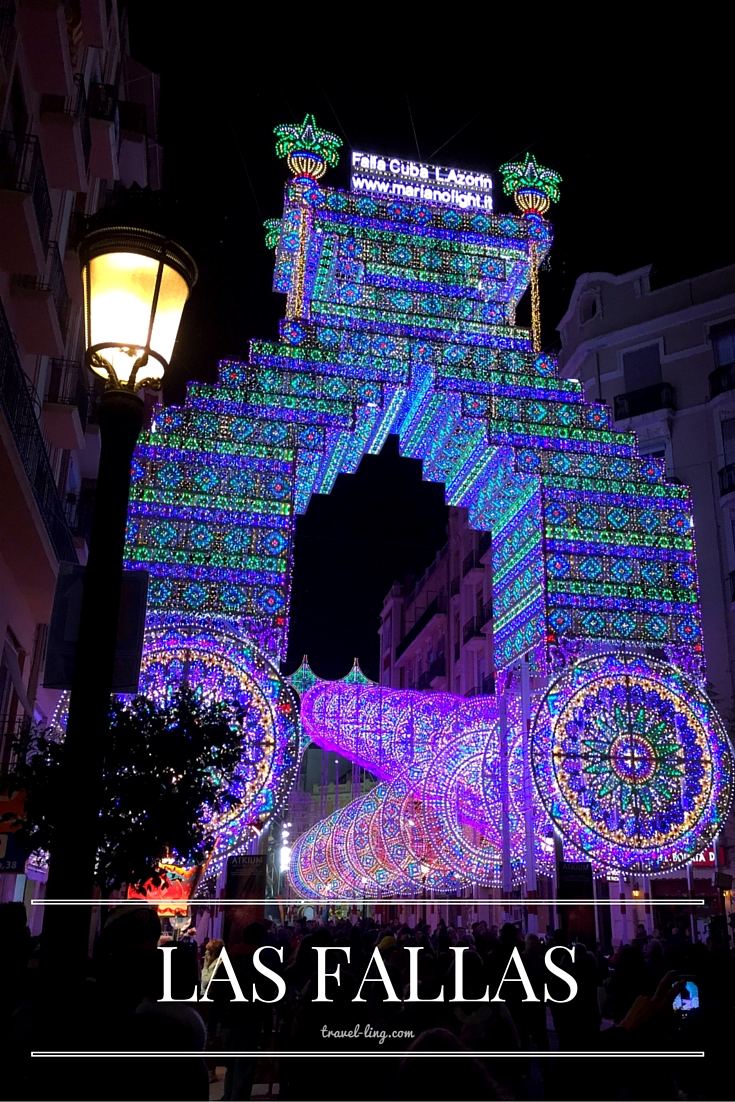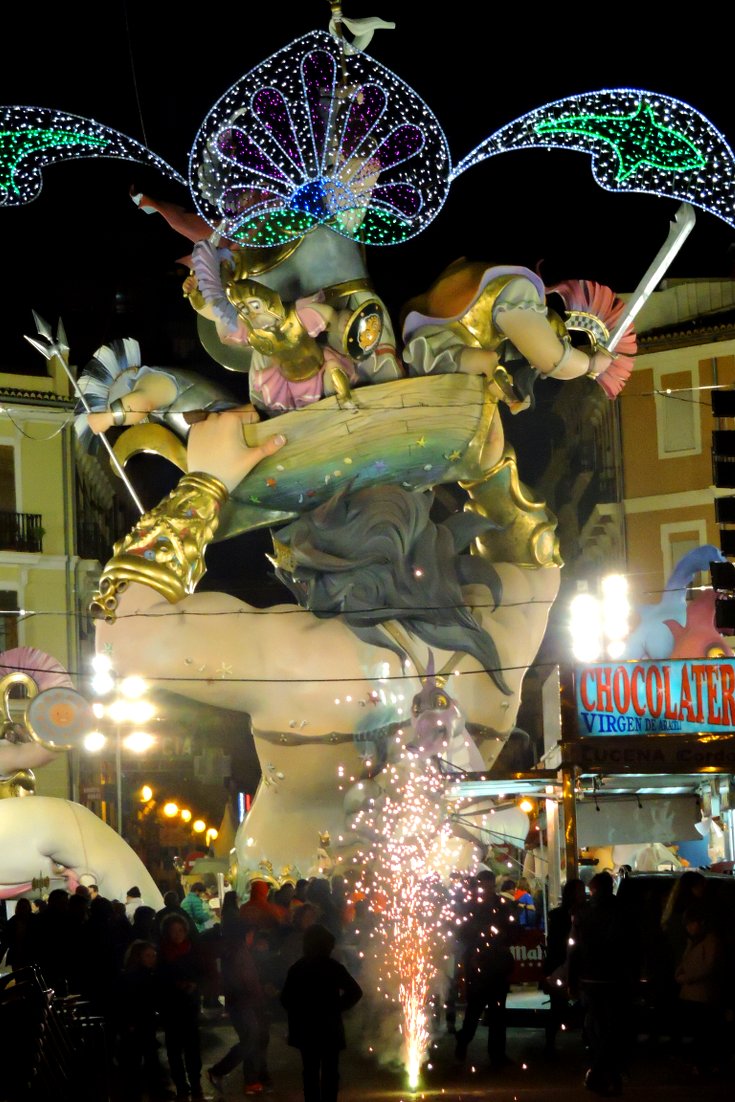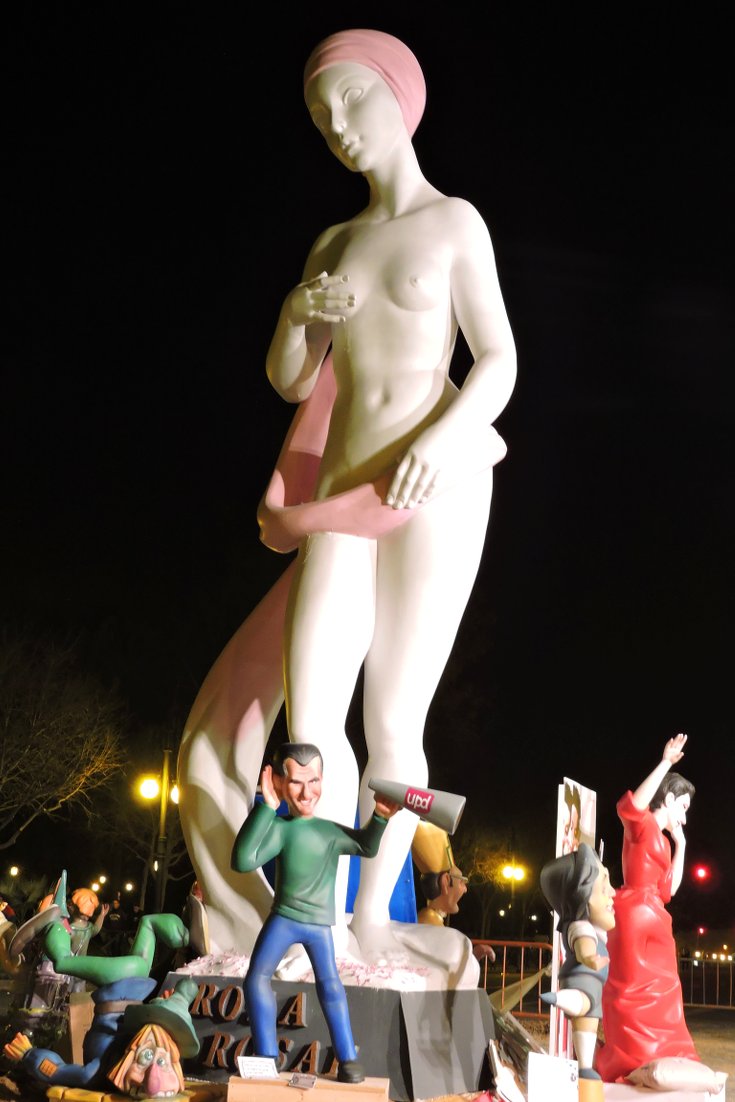It’s the time of year when all pyro’s can rejoice – Las Fallas! What is Las Fallas? It’s a crazy celebration in Valencia, in which they build tall wooden figurines (called fallas) and then burn them all to the ground from midnight on the final night! Each year, neighbourhoods and families of Valencia celebrate Las Fallas between the 15th to the 19th of March and the city is a non-stop party for the 5 days, filled with fireworks, firecrackers, bullfighting, paella contests and even beauty pageants.
History of Las Fallas
Las Fallas is the celebration of St Joseph and also the spring equinox. In fact, it is a combination of many things – pagan and Christian customs mixed with Valencian pride. It’s originally thought to be connected to the pagan spring equinox. From as early as the 13th century, artisans and carpenters would have to create wooden makeshift candleholders (called ‘parots’) to assist their work during the cold and dark days of winter. Come the equinox, they would celebrate the end of winter and the longer days of spring by burning their makeshift structures they used during the short winter days.
Feeling Pinspired? Hover and click on any of the pictures to save to Pinterest!
- Amazingly detailed fallas
- The structures are wild
This long-standing tradition has evolved over time, with the workers and families getting creative and ‘personalising’ the wooden structures, prior to burning them, eventually leading to what we now see today. At some point, the authorities, trying to avoid the celebrations getting too out of control, designated the burning event (now known as la cremá) to the eve of St Joseph’s day, who just so happened to be the patron saint of carpenters (hence the craftsmanship and wood angle with the fallas structures). And of course, a celebration in Spain is never a low-key affair, now with fireworks, street parties, parades, food, music and more added to the mix. What an evolution!
Fallas and Ninots
Throughout the year, neighbourhoods and families of Valencia design and build a falla, a huge structure made of wood, cardboard, paper maché and other materials. These fallas are comprised of smaller hand-made figures or dolls, called ninots. Normally inspired by popular culture or political themes, the fallas are satirical in nature and offer light-hearted and comical political and social commentary. A lot of work and pride goes into these fallas, with support from businesses and the local council. These fallas can stand several stories tall (up to 20 metres) and are erected throughout the city on the 15th of March. 370 full-sized fallas and 368 children’s fallas are on display for everyone to see, and also vote for their favourite, until midnight of the 19th, known as la cremá, when they are set alight and burnt to the ground in front of many spectators. Come the next day, plans and ideas are put together for the next year’s event.
There is even a museum dedicated to the fallas in Valencia, and it’s a fun visit if you have a spare afternoon free in this beautiful city. For more information on opening times, prices and location, click here.
Our Impressions
Due to work, we weren’t able to attend all of the festivities of Las Fallas. However, we did get to enjoy the main event, La Cremá. As we pulled into Valencia’s train station at 10pm that night, we dug deep and found our energy reserves for the very quick and intense introduction to Las Fallas. We raced through the streets and through crowds, backpacks still attached, to see as many Fallas as possible on our way to our accommodation.
- Beautiful archways lined many streets
- Fireworks and crackers were let off all night
The streets were absolutely mad, with firecrackers going off left, right and centre. Families were out in their packs, with kids out way past their bedtime (we are constantly surprised how late kids stay up here in Spain!). In fact, I doubt they had slept all week. There was an excitement in the air, similar to how Christmas Eve felt for us as kids. One certainly couldn’t deny the electrifying atmosphere, amplified with the noises of fireworks and laughter, the smells of roasting corn and other carnival food and the mesmerising sight of these larger-than-life and incredibly detailed structures protruding from street corners.
Despite having worked all day, and manoeuvring through the crowd with a bulky backpack on, I was psyched. I certainly had found my second wind and was powering from one falla to the next, absolutely wonderstruck by the impressive structures. Realising we were running out of time fast (as the Cremá burning began at midnight), we caught a taxi to our accommodation to quickly dump our bags and make our way to the Plaza del Ayuntamiento (town square) for the main event.
- Las Fallas is a crazy must-see
- These fallas are impressive.. and so big!
As we made our way through the narrow and twisted streets, we saw smaller fallas be burned. Maybe I have a little pyro in me, but there is something exhilarating about seeing the fire. Or maybe I am as much like Khaleesi as I try to be – “Fire cannot kill a dragon”. I did love seeing the fallas burn to the ground, but found it quite amazing and somewhat hard to believe that buildings aren’t accidentally burnt down in the process, especially considering how big some of these fallas can get. The firemen certainly have their work cut out for them on the night.
- One of the fallas being burnt to the ground
- The fallas normally represent some political or social commentary
We continued to rush through the streets, observing fallas and fires, to get to the square. Unfortunately, every Spanish citizen, or so it had seemed at the time, had already staked out their spot long before our arrival, and places with a good view were limited. What made it worse, was as the smaller fallas were being burnt off, the streets would close around them, making it quite the challenge to pick the right street that was still accessible and beat the crowds. It almost felt like a real-life game of Pacman, where we were just trying to get to the end, but finding dead ends, or crowds blocking our paths.
Thankfully, Spain time is not overly that strict, and we managed to make it to the town square to see the council Falla be lit up in all of it’s majestic and fiery glory. What a sight! To see something that beautiful, and of which would have taken a lot of time to construct, literally be burned to the ground was exciting and emotional at the same time. I wasn’t the only one mesmerised and struck by the sentiment, as the whole crowd seemed to feel something as well. There would be excited chatter in the air as the lion started to light up, then silence as the fire completely took over to cheers and applause at the end, signifying a new beginning. It may seem like a strange tradition, but there really was something refreshing about the Cremá, understanding that the past is the past: we create it, we celebrate it, we burn it and we move on.
Sadly, we missed a lot of the great events in Valencia leading up to the Cremá, such as the recortadores (acrobatics crossed with bullfighting, but without the blood) and fallas on display during the daytime. However, this just gives me even more reason to come back for another Las Fallas in the future. And since I absolutely love Valencia, I know I will be back…
- The fallas are larger than life
- La Cremá – the final act
Fast Info
- 15th – 19th March, annually
- Best to book accommodation well in advance. Check out prices here.
- Las Fallas is a free festival, but many individual events will have entry fees. Check out Visit Valencia for more info.
- Las Fallas in Valencia is worth the trip
- Commentary on global warming perhaps?
Have you been to Las Fallas? What did you think? Comment below!
Latest posts by Kim-Ling (see all)
- 9 Gifts for the Traveller at Home in 2020 - November 27, 2020
- Tropicfeel Shoes – The Travel Shoe for Everywhere, Every Day - June 22, 2020
- Light to Light Camps – The best way to do the Light to Light Walk - July 30, 2019



















